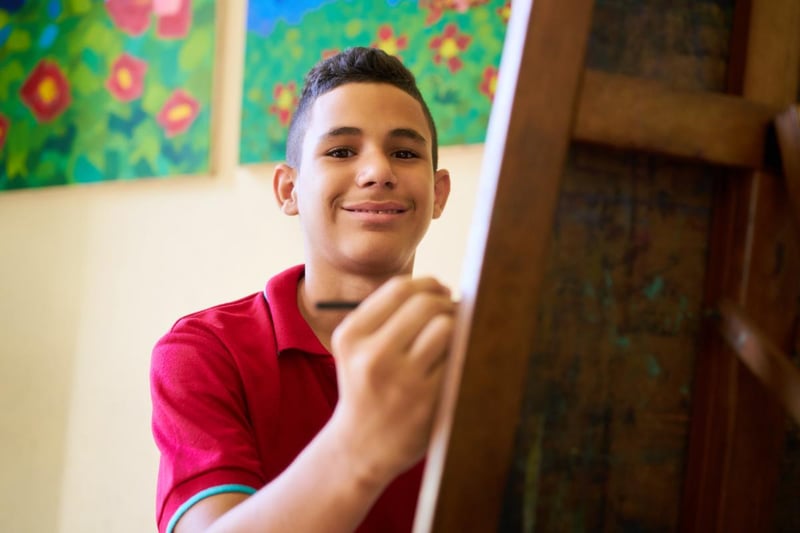9 Types of Art Therapy

Not every teen responds the same way to therapy. It's why receiving care at a treatment facility that uses several therapeutic modalities is such an advantage. There is no denying that being a teenager is stressful, and navigating a substance use or mental health disorder can be very confusing. It can be hard to find a way for teens to express themselves in a comfortable way. Experiential therapies like the
art therapy program at Stonewater Adolescent Recovery Center can be highly beneficial for teens going through treatment for a substance use disorder, mental health issue, or dual diagnosis.
What Is Art Therapy?
Adolescent art therapy can come in the form of many mediums. Creating art is a way for teens to express feelings without having to speak. Art therapy has been proven to be especially effective with teens who are shy or socially introverted. It can also help those who have difficulty sharing their emotions verbally and those struggling with the effects of trauma. Art is an outlet for expression for any teen. However, for those with addiction or mental health issues, it can help them process their emotions in a more tangible way than traditional therapies. Art therapy can help identify conflicts, topics, or needs that should be specifically addressed with a therapist. For those that struggle with communicating, art can be a way to avoid bottling up feelings that may be at the root of their struggles. As part of an art therapy program, teens are able to write, draw, paint, sculpt, mold, or anything they would like to express their art. Types of art therapy can include:- Doodling
- Scribbling
- Drawing
- Painting with either a paintbrush or finger
- Photography
- Sculpting
- Knitting, crocheting, stitching, or another form of needlework
- Graphic design
- Multimedia art, using a variety of the above
Experiential Therapy Options
Every experiential therapy can help reinforce a talent or bring out a hidden one. The benefit of utilizing these non-traditional therapies is that it steers struggling teens to more constructive uses of their time, energy, and mindset. These are skills they can continue to focus on once they leave treatment to continue healthy habits for life. Experiential therapies like art can be the ideal replacement for addictive behavior in a teen's life. Creative expression allows for different levels and types of communication. For those who struggle with verbalizing, experiential therapies can greatly help them communicate. Benefits of art therapy include:- Building trust with peers and mentors
- Fostering confidence, creativity, healing, and community
- Relieving stress
- An effective form of communication for those uncomfortable communicating verbally
- Less pressure than traditional therapy
- Discovery of hidden skills
- Curbs emotional breakdowns and relapse
Stonewater Adolescent Recovery Center Offers a Range of Therapeutic Options
Every piece of art created as part of our art therapy program is a visual representation of the progress each teen makes during their treatment and recovery. Art is something tangible. It shows the difference between their work from when they entered treatment to when they completed treatment can be one of the most powerful tools on a teen's path to sobriety. It's called art therapy and not just an art class for a reason. Art is one of the most calming, stress-relieving activities you can participate in to keep your mind and body occupied with something constructive. It also creates something beautiful for as long as you are able to do it. Other experiential therapies offered include:- Adventure and nature therapy
- Equine therapy
- Pet therapy
- Music therapy
- Art therapy

.jpg)

